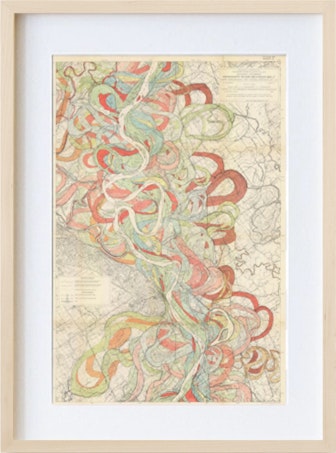
On Sprezzatura: Baldassare Castiglione’s The Book of the Courtier (1903 edition)
What do Cicero’s orations, the “no-makeup” makeup trend, and Marcel Duchamp’s readymade stunt of submitting a porcelain urinal to an art exhibition have in common? All champion a certain kind of nonchalance — an artfulness that conceals its own artifice. In short, all three are appreciated, not without controversy, for the inimitable essence of sprezzatura.
While the qualities associated with this Italian word have been praised since the classical era, sprezzatura found a modern patron in Baldassarre Castiglione, whose The Book of the Courtier (Il Cortegiano) holds the performance of effortlessness in highest regard. Purporting to be a series of dialogues that took place among courtiers across several evenings in the early 1500s, Castiglione’s treatise achieved widespread renown as a philosophical exploration of etiquette, courtship, and politics. By 1903, more than 140 editions had appeared in almost a dozen languages, making it one of the most distributed books of its period and kind. The Book of the Courtier is perhaps due for rediscovery in the pandemic era — which, for many, has been characterized by the boredom of waiting — as characters suggest different games in order to while away an idle evening.
There are initially some odd ideas. Fra Serafino proposes what he calls a fine game that sounds no fun: “let everyone give his opinion why it is that nearly all women hold rats in hatred, and are fond of snakes; and you will see that no one will guess the reason except myself, who learned the secret in a strange way”. But we never get to hear the answer or how he happened upon this “secret”, because Emilia Pia hushes him, and, with a silent gesture, gives Unico Aretino the chance to speak. Finally, after much courtly throat-clearing, the game is decided: each will take turns “portraying a perfect Courtier, explaining all the conditions and special qualities requisite in one who deserves this title”.
There are some obvious traits, quickly proposed: noble birth, charming character, skill in war. And then Count Ludovico advances his compelling proposal about sprezzatura, which he calls the “one universal rule” concerning graceful behavior: “to avoid affectation to the uttermost”, “to practice in everything a certain nonchalance [sprezzatura]”. Unlike later aesthetic categories such as the picturesque, this one wanted to hide the artful qualities of lived experience. There is nothing to which we must “give greater care than to conceal art, for if it is discovered, it quite destroys our credit and brings us into small esteem”. He cites the example of classical orators, who, with monologues memorized, would pretend to extemporize, as if the language was “springing rather from nature and truth than from study and art; the which, if it had been detected, would have made men wary of being duped by it”.
This is the paradoxical cocktail of qualities that define sprezzatura — the achievement of eloquence and honesty through deception and concealment. Paolo D’Angelo in Sprezzatura: Concealing the Effort of Art from Aristotle to Duchamp (translated into English in 2018) — perhaps the best study to date of Castiglione and hidden ornament — makes use of this effect in the first lines of his preface: “I suppose one could say that I’ve been working on the book for twenty years, even though I wrote it in a few months during the spring and summer of 2004”. There is a certain ease here, a studiously unstudied element. D’Angelo later quotes the Bohemian painter Raphael Mengs, who in 1762 observed that the “paintings which are commonly praised, and esteemed of good taste, are those in which one sees well express the principal objects, with a certain ease, which hides all labour and art”. Other expressions get close to Castiglione’s ideal: French has je ne sais quoi; Latin, ars est celare artem (it is art to conceal art); Japanese, iki, an adjective meaning “subtly elegant, refined with no ostentation”; but nothing captures this kind of aesthetic coolness quite like sprezzatura, which glides off the tongue almost as languidly as the style it describes.
Above you can browse Leonard Eckstein Opdycke’s 1902 translation of Il Cortegiano. While the book was first translated into English by Thomas Hoby in 1561, and again in 1727, Opdycke’s effort arose from the scarcity of copies available at the century’s turn. And though our world looks a lot different than courtly life in Urbino during the Renaissance, the city on the Apennine slopes where Castiglione’s book takes place, Opdycke believes that these “pages will lack interest only when mankind ceases to be interesting to man, and will reward study so long as the past shall continue to instruct the present and the future”.
May 6, 2021






